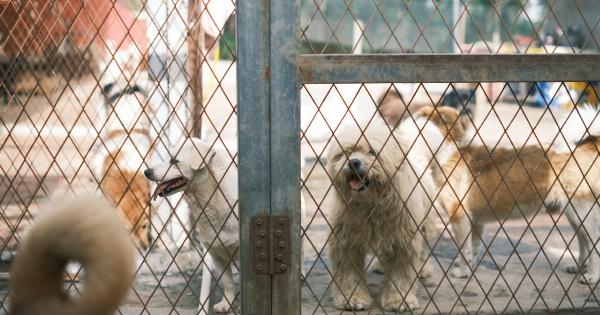As dog owners, we love our pets dearly and believe that we have a strong bond with them. We spend a lot of time with them, playing, training, and taking care of them.
We read their body language, and we try to understand what they are trying to communicate. However, sometimes we may misunderstand their signals, and that can lead to confusion, frustration, and even aggression between us and our furry friends.
Understanding canine body language
Dogs use a range of body language to communicate with us and other dogs. It includes postures, facial expressions, tail position, ear position, and vocalizations.
Understanding these signals is essential to build a strong bond with your dog and prevent miscommunication.
Postures
Dogs use a range of postures to communicate their mood and intentions. A relaxed and happy dog will have a loose posture, with a wagging tail, relaxed ears, and an open mouth.
A fearful or aggressive dog, on the other hand, will have a tense posture, with a lowered tail, raised hackles, and a closed mouth.
It’s important not to approach a fearful or aggressive dog, as it can lead to a dangerous situation. Instead, give the dog some space and try to calm it down with a soft voice.
Facial expressions
Dogs use their facial expressions to communicate their emotions. A happy dog will have a relaxed and open mouth, with a wagging tail and relaxed ears.
An anxious or nervous dog, on the other hand, will have a tense mouth, with a furrowed brow and pinned-back ears.
It’s essential to pay attention to your dog’s facial expressions, as it can indicate their level of comfort or discomfort in certain situations.
For example, if your dog is showing signs of stress, such as a tucked tail or a wrinkled forehead, it may be time to remove them from the situation.
Tail position
A dog’s tail can tell us a lot about their mood and intentions. A wagging tail can indicate happiness or excitement, while a tucked tail can signal fear or submission. A stiff tail could be a sign of aggression or fear.
It’s important to know your dog’s tail positions and the meanings behind them, as it can help you understand how they’re feeling in different situations.
Ear position
Dogs use their ears to express their emotions and intentions. Whether they’re alert, happy, or fearful, their ears can tell us a lot about how they’re feeling.
A relaxed and floppy ear can indicate a relaxed and happy dog, while a tense and pinned-back ear can be a sign of fear or discomfort.
Vocalizations
Dogs use a range of vocalizations to communicate, including barks, growls, whines, and howls. Each vocalization has a different meaning and intent, and it’s essential to understand what your dog is trying to communicate.
For example, a low growl can indicate a warning or threat, while a high-pitched whine can be a sign of anxiety or discomfort.
The importance of socialization and training
Socialization and training are essential for dogs to communicate appropriately with humans and other dogs.
Through socialization, dogs learn how to interact with different types of people, animals, and environments, which help them become confident and less fearful or anxious.
Training also teaches dogs to follow basic commands, such as sit, stay, and come, which can help prevent miscommunication and keep them safe in different situations.
Conclusion
Understanding your dog’s body language is essential to build a strong and healthy relationship with them.
Learning how to read their postures, facial expressions, tail position, ear position, and vocalizations can help you understand their emotions and intentions in different situations.
By socializing and training your dog, you can help them communicate appropriately with humans and other dogs, which can prevent miscommunication and lead to a happy and healthy life for both of you.



























